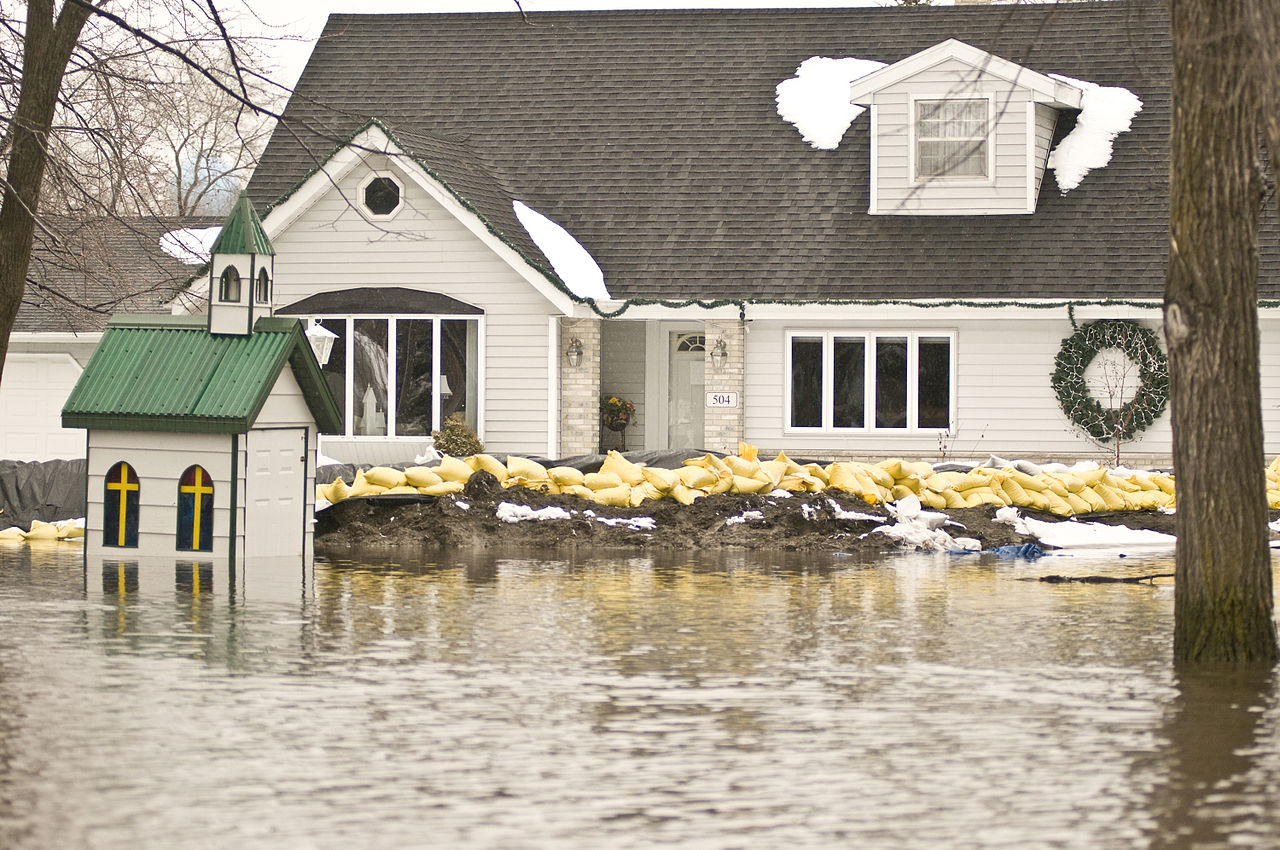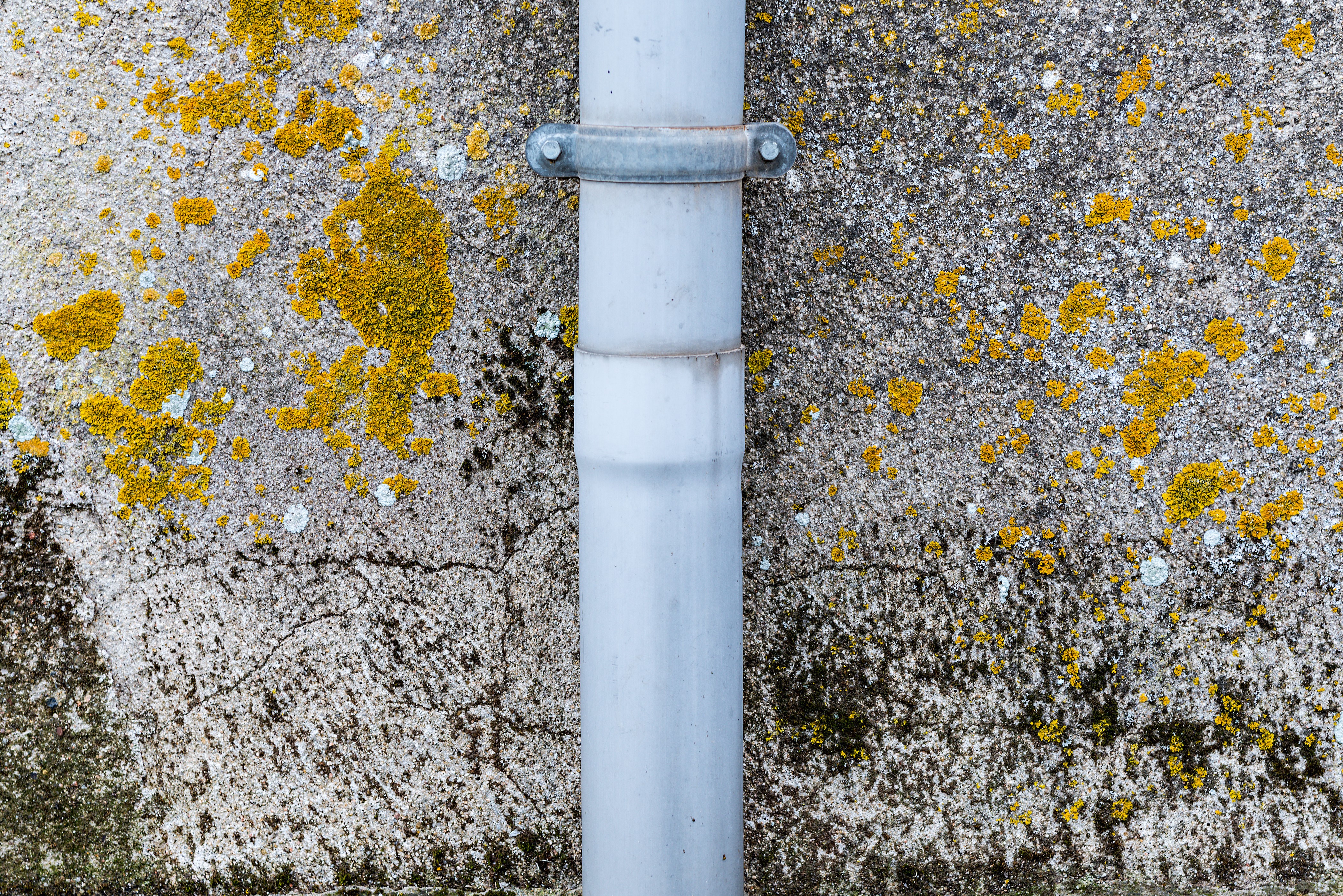Does Boiling Water Kill Mold? Heat Treatment for Mold Removal
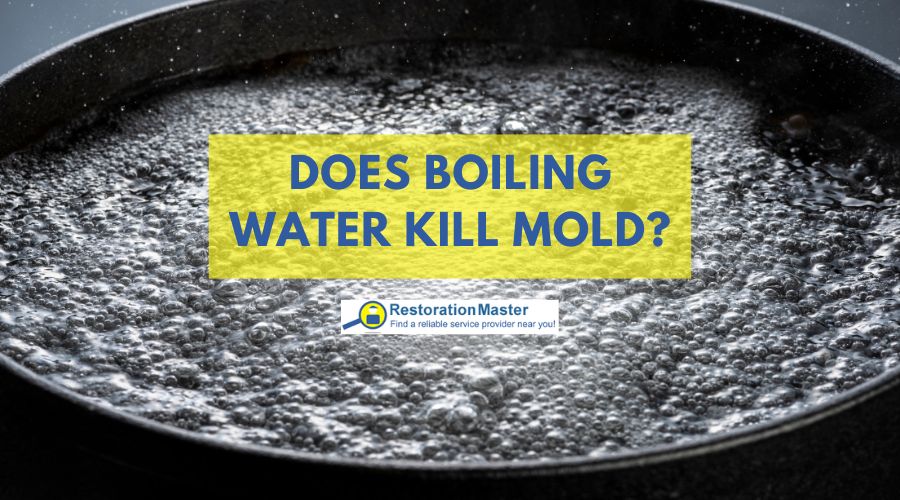
MoldMold is a type of fungus that grows in damp or humid conditi... More is one of the most persistent household problems, showing up in kitchens, bathrooms, basements, and even inside appliances. Beyond looking unpleasant, certain molds can cause allergic reactions, asthma flare-ups, and other health concerns. While there are many moldMold is a type of fungus that grows in damp or humid conditi... More removal products on the market, some contain harsh chemicals and can be expensive. This leaves many homeowners wondering: Can you simply use boiling water to kill moldMold is a type of fungus that grows in damp or humid conditi... More?
Key Takeaways
- Boiling water reaches temperatures that can kill most moldMold is a type of fungus that grows in damp or humid conditi... More sporesSpores are microscopic reproductive units of fungi or mold t... More on contact.
- MoldMold is a type of fungus that grows in damp or humid conditi... More typically dies between 140°F and 160°F, but higher heat can be more effective.
- Heat works best for small, heat-safe items and should be applied carefully to avoid damage.
- Using boiling water has limitations; it’s not practical for large or porousPorous describes a material that contains small openings or ... More surfaces.
- Long-term mold prevention depends on controlling moisture and improving ventilationVentilation is the process of exchanging or circulating air ... More.
Understanding Mold Growth in the Home
MoldMold is a type of fungus that grows in damp or humid conditi... More is a type of fungus that thrives in damp, poorly ventilated environments and spreads through microscopic sporesSpores are microscopic reproductive units of fungi or mold t... More. Indoors, it often appears as fuzzy black, green, and white patches or thread-like structures. MoldMold is a type of fungus that grows in damp or humid conditi... More requires specific conditions to encourage its growth, including:
- Moisture – from leaks, condensation, or high humidityHumidity is the amount of moisture or water vapor present in... More
- Organic material – like wood, paper, fabric, or dust
- Warmth – indoor temperatures often provide ideal conditions
Common Household Mold Strains You Might Encounter
| MoldMold is a type of fungus that grows in damp or humid conditi... More Type | Appearance | Common Locations | Health Concerns |
|---|---|---|---|
| Black moldMold is a type of fungus that grows in damp or humid conditi... More (StachybotrysStachybotrys is a type of black mold (often called “black ... More chartarum) | Dark black/green patches | Drywall, wood, carpet after water damage | Respiratory issues, mycotoxin exposure |
| Aspergillus | Green, yellow, or white | HVAC systems, ventilationVentilation is the process of exchanging or circulating air ... More ducts | Allergies, lung infections in at-risk groups |
| Penicillium | Blue or green fuzz | Fabrics, insulationInsulation is a material used in buildings to reduce the tra... More, wallpaper | Sinus irritation, respiratory discomfort |
| Cladosporium | Olive-green to black | Wood, carpets, HVAC systems | Allergy-like symptoms, asthma flare-ups |
By understanding the common household moldMold is a type of fungus that grows in damp or humid conditi... More strains, property owners can identify the early signs and take preventive measures. If the moldMold is a type of fungus that grows in damp or humid conditi... More infestation is large, consider contacting mold remediation professionals to thoroughly remove moldMold is a type of fungus that grows in damp or humid conditi... More from your property.
At What Temperature Does Mold Die?
Research from the U.S. Department of Agriculture (USDA) shows that most moldMold is a type of fungus that grows in damp or humid conditi... More strains die when exposed to sustained temperatures between 140°F and 160°F (60°C to 71°C). However, killing moldMold is a type of fungus that grows in damp or humid conditi... More sporesSpores are microscopic reproductive units of fungi or mold t... More completely may require even higher heat or longer exposure times.
For example:
- Boiling water (212°F / 100°C) can kill moldMold is a type of fungus that grows in damp or humid conditi... More and sporesSpores are microscopic reproductive units of fungi or mold t... More on contact.
- Hot dry air sterilization (around 140°F for 3 hours) is another proven method, but it requires specialized equipment used by mold remediationMold remediation is the process of identifying, removing, an... More professionals.
Important: Just because heat kills moldMold is a type of fungus that grows in damp or humid conditi... More doesn’t mean the surface is safe; dead moldMold is a type of fungus that grows in damp or humid conditi... More can still cause allergic reactions if not removed. Heating your home to excessively high temperatures for extended periods can make the moldMold is a type of fungus that grows in damp or humid conditi... More worse. This is because air retains more moisture at higher temperatures, leading to increased humidityHumidity is the amount of moisture or water vapor present in... More and, consequently, more moldMold is a type of fungus that grows in damp or humid conditi... More growth. While heat does have the ability to kill moldMold is a type of fungus that grows in damp or humid conditi... More, it may not be the most effective method for eradicating it from your home or business. In such instances, seeking professional assistance to tackle the issue might be a better approach.
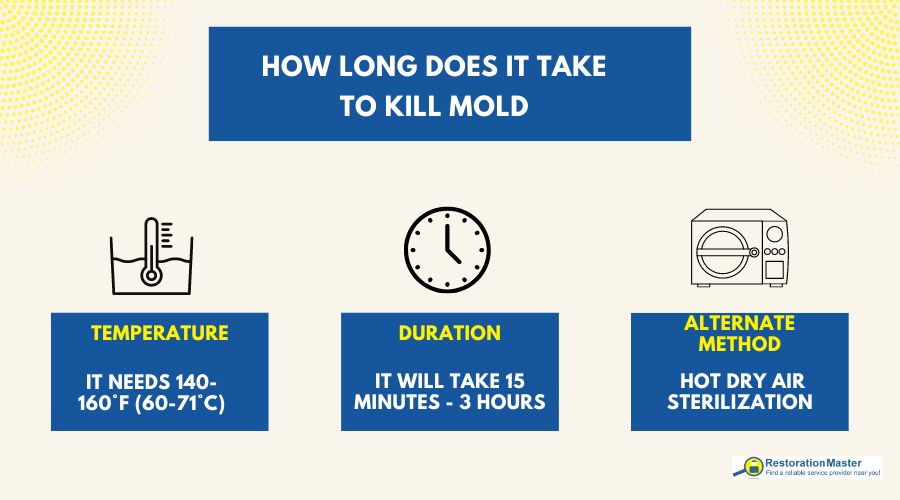
Does Boiling Water Kill Mold?
Yes, boiling water can kill moldMold is a type of fungus that grows in damp or humid conditi... More by exposing it to temperatures far above the range most moldMold is a type of fungus that grows in damp or humid conditi... More species can survive. At 212°F (100°C), boiling water destroys the cellular structureStructure refers to the framework or components of a buildin... More of the moldMold is a type of fungus that grows in damp or humid conditi... More and renders its sporesSpores are microscopic reproductive units of fungi or mold t... More nonviable. This makes it an effective method for disinfecting small, non-porous items such as glass jars, metal tools, ceramic dishes, or certain cookware.
However, boiling water is not practical for large surfaces or porousPorous describes a material that contains small openings or ... More materials like carpets, drywall, upholstered furniture, or wood. In those cases, moldMold is a type of fungus that grows in damp or humid conditi... More can penetrate deep into fibers and crevices where boiling water cannot reach. Even if the surface moldMold is a type of fungus that grows in damp or humid conditi... More appears to be gone, hidden colonies may remain alive inside the material and regrow once conditions are right.
Boiling water is best suited for items that can be fully submerged without damage, and it should be combined with thorough scrubbing and complete dryingDrying is the process of removing moisture from materials, s... More to prevent the return of moldMold is a type of fungus that grows in damp or humid conditi... More. For structural materials or larger infestations, professional remediation is the safer, more effective choice.
How to Kill Mold Spores with Boiling Water
- Scrub First: Wash the item with soap and water to remove visible moldMold is a type of fungus that grows in damp or humid conditi... More.
- Boil Water: Bring clean water to a rolling boil in a large pot.
- Submerge Item: Place the moldy item in boiling water for at least 15 minutes.
- Air Dry Completely: Dry the item in a clean, well-ventilated area.
Only use this method on heat-safe materials (stainless steel, heat-safe glass, non-porous ceramic items, and some hard plastic items). Avoid boiling anything made of wood, fabric, or delicate plastics, as the heat can cause warpingWarping is the bending, twisting, or distortion of materials... More, shrinking, or melting.
Using Boiling Water to Remove Mold | RestorationMaster Video
Risks and Limitations of Using Heat to Kill Mold
While boiling water is an effective spot treatment, it’s not a universal moldMold is a type of fungus that grows in damp or humid conditi... More solutionA solution is a homogeneous mixture of two or more substance... More. Risks include:
- Damage to materials (melting, cracking, discoloration)
- Incomplete removal if sporesSpores are microscopic reproductive units of fungi or mold t... More are inside porousPorous describes a material that contains small openings or ... More surfaces
- HumidityHumidity is the amount of moisture or water vapor present in... More increases if the steam is not ventilated properly
- Survival of heat-resistant sporesSpores are microscopic reproductive units of fungi or mold t... More under certain conditions
It is important to insulate or ventilate the area affected by moldMold is a type of fungus that grows in damp or humid conditi... More so that you do not burn out the source material that you are treating. Also, heating an entire room to high temperatures is not recommended without professional mold specialist guidance. High indoor heat can increase humidityHumidity is the amount of moisture or water vapor present in... More, which may actually encourage more moldMold is a type of fungus that grows in damp or humid conditi... More growth.
Alternative Mold-Killing Methods
Property owners should note that boiling water should only be used to kill moldMold is a type of fungus that grows in damp or humid conditi... More on items that cannot be harmed by moisture or extreme heat; otherwise, you may end up with more damage than you started with. If boiling water isn’t practical for your situation, consider these alternatives:
- Vinegar: Naturally acidic and safe for many surfaces
- Hydrogen peroxide: Effective against moldMold is a type of fungus that grows in damp or humid conditi... More sporesSpores are microscopic reproductive units of fungi or mold t... More and bacteria
- Baking soda: Gentle abrasive for scrubbing moldMold is a type of fungus that grows in damp or humid conditi... More from surfaces
- Commercial moldMold is a type of fungus that grows in damp or humid conditi... More removers: Stronger for severe infestations
- Steam cleaning: Uses pressurized steam for certain fabrics and tiles
How to Prevent Mold in Your Home
MoldMold is a type of fungus that grows in damp or humid conditi... More poses a significant challenge in both homes and businesses, negatively impacting the environment within. Killing moldMold is a type of fungus that grows in damp or humid conditi... More is only half the battle; preventing it from returning is key. Fortunately, proactive steps can be taken to mitigateTo mitigate is to reduce or limit the severity of damage, ri... More the risk of moldMold is a type of fungus that grows in damp or humid conditi... More growth. Here’s how:
- Keep indoor humidity below 50% with dehumidifiers or air conditioners
- Fix plumbing leaks promptly
- Use exhaust fans in bathrooms and kitchens
- Clean and dry wet surfaces within 24–48 hours
- Store items in dry, ventilated spaces
When to Call a Mold Remediation Professional
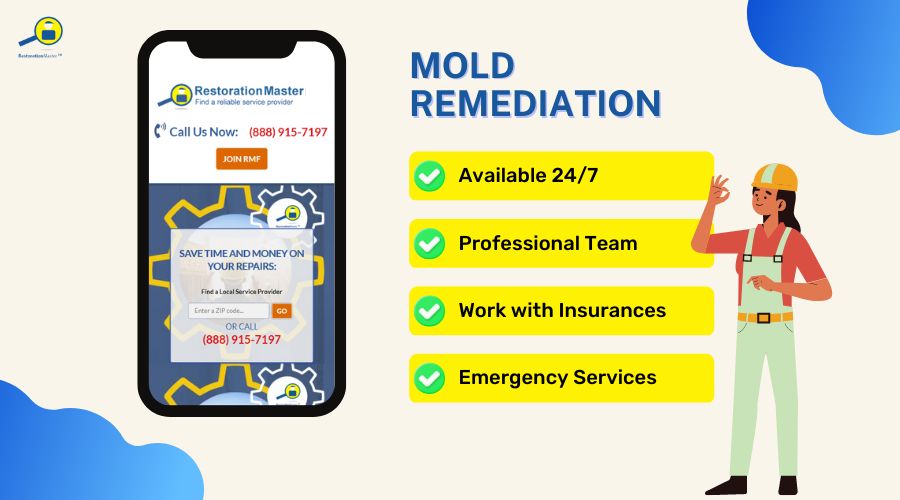
Boiling water is a quick, chemical-free way to kill moldMold is a type of fungus that grows in damp or humid conditi... More on small, heat-safe objects, but it’s not a whole-house solutionA solution is a homogeneous mixture of two or more substance... More. For larger problems, professional remediation is the safest and most effective choice.
If moldMold is a type of fungus that grows in damp or humid conditi... More covers an area larger than 10 square feet, is inside HVAC ducts, or involves toxic black moldMold is a type of fungus that grows in damp or humid conditi... More, call a professional. Certified mold remediation technicians use advanced heat treatments, HEPA filtration, and containment procedures to safely remove moldMold is a type of fungus that grows in damp or humid conditi... More without spreading sporesSpores are microscopic reproductive units of fungi or mold t... More.
FAQs – Using Boiling Water to Kill Mold
Does boiling water kill black moldMold is a type of fungus that grows in damp or humid conditi... More?
Yes. Boiling water can kill black moldMold is a type of fungus that grows in damp or humid conditi... More on small, non-porous items if they can safely handle high heat. The key is to scrub the surface first and fully submerge the item in boiling water.
How long does boiling water take to kill moldMold is a type of fungus that grows in damp or humid conditi... More?
Boiling water kills most moldMold is a type of fungus that grows in damp or humid conditi... More instantly upon contact. For the best results, keep the item in boiling water for at least 15 minutes.
Does boiling water kill moldMold is a type of fungus that grows in damp or humid conditi... More in the sink?
Yes. Pouring boiling water down the sink can kill moldMold is a type of fungus that grows in damp or humid conditi... More on the drain surface, but it will not remove deeper growth in pipes. Scrubbing and cleaning are still needed.
Can heat kill moldMold is a type of fungus that grows in damp or humid conditi... More sporesSpores are microscopic reproductive units of fungi or mold t... More on household objects?
Yes. Most moldMold is a type of fungus that grows in damp or humid conditi... More sporesSpores are microscopic reproductive units of fungi or mold t... More die at temperatures above 140°F. Boiling water and steam cleaning are effective for heat-safe materials like glass, metal, and some plastics.
Does heat kill moldMold is a type of fungus that grows in damp or humid conditi... More on food?
Heat can kill moldMold is a type of fungus that grows in damp or humid conditi... More on food, but it does not make the food safe to eat. MoldMold is a type of fungus that grows in damp or humid conditi... More can produce toxins that remain even after heating, so moldy food should be thrown away.










